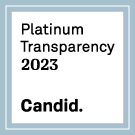Damon Runyon Clinical Investigator Joshua Brody, MD, and his colleagues at the Icahn School of Medicine at Mount Sinai report a promising new cancer vaccine that activates the immune system to fight tumors throughout the body. This exciting new reserach was published in Nature Medicine.
Damon Runyon News
As high fructose corn syrup — common in soda and processed foods — has crept into everyday diets, rates of obesity and diseases like type 2 diabetes and high blood pressure have increased. Now, Former Damon Runyon Fellow Jihye Yun, PhD, and colleagues have discovered another reason to avoid the sweetener: consuming the equivalent of 12 ounces of sugary soda a day accelerated tumor growth in mice that were predisposed to colon cancer.
Nicknamed Canada’s Nobels, the Gairdner Awards for medical research celebrate the world’s best biomedical and global health scientists. This year Bruce W. Stillman, PhD (Damon Runyon Fellow ’78-81’), President and CEO of Cold Spring Harbor Laboratory, received the honor for his work describing the exact sequence of events involved in DNA replication.
The American Association for Cancer Research announced the winners of this year's Scientific Achievement Awards, which recognize scientists and clinicians who have made significant contributions to our understanding of the diagnosis, prevention, and treatment of cancer. Congratulations to three Damon Runyon Alumni for receiving this honor.
Damon Runyon Clinical Investigator Priscilla K. Brastianos, MD, is driven to find a cure for metastatic cancer. Dr. Brastianos’s grandmother was 23 years old when she felt a breast mass during medical school training and diagnosed herself with breast cancer, only to pass away at 29 when the cancer had metastasized to the spine. Four decades later, her mother faced the same devastating diagnosis. After living through therapy after therapy that failed, she lost the fight to breast cancer that had metastasized to the brain.
By Joseph D. Mancias, MD, PhD, Damon Runyon Rachleff-Innovator at the Dana-Farber Cancer Institute
At the recent Accelerating Cancer Cures Symposium in New York City, I got an inside look at the cutting-edge cancer research presented by fellow Damon Runyon scientists. The unique symposium encourages networking with fellow awardees and pharmaceutical industry leaders. Unlike solitary work in the lab, collaboration provides a synergy of ideas most likely to lead to unexpected paths of discovery.
To make breakthroughs, trailblazing scientists must possess deep conviction in themselves and a vision of how they can make an impact. For Damon Runyon Clinical Investigator Christine M. Lovly, MD, PhD, this realization came at 16 years old, when she decided that her calling was to help cancer patients in the clinic and seek better treatments in the lab.
To look at Former Damon Runyon-Dale Frey Breakthrough Scientist Angela J. Waanders, MD, MPH, one would never imagine she has faced failure. She is Director of Precision Medicine in Oncology at the Lurie Children's Hospital of Chicago, an Associate Professor at Northwestern University’s The Feinberg School of Medicine and a pioneer in developing more effective treatments for children with brain tumors.
Jeopardy! host Alex Trebek’s recent announcement of his stage 4 pancreatic cancer diagnosis has brought renewed attention to this rare, yet devastating disease -- the third-leading cause of death from cancer in the United States. By the time of diagnosis, the cancer has usually spread to other parts of the body, most commonly the liver, making treatment difficult and prognosis poor. Former Damon Runyon-Rachleff Innovator Gregory L. Beatty, MD, PhD, and colleagues at the Abramson Cancer Center of the University of Pennsylvania, recently discovered how the cancer cells are metastasizing.
Trailblazers persevere in the face of uncertain success and overcome obstacles to reach their goals. This is the path Damon Runyon Clinical Investigator Ann L. Mullally, MD, has taken to piece together the cause of a rare blood cancer called myeloproliferative neoplasms (MPN), which has few treatment options and no cure. “Medicine and science allow you not just to imagine changing the world for the better, but also to actually really do it!” she says.







